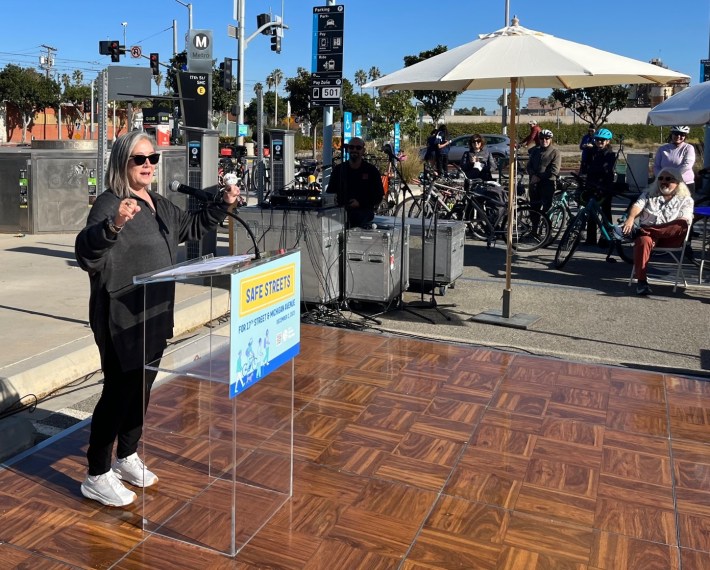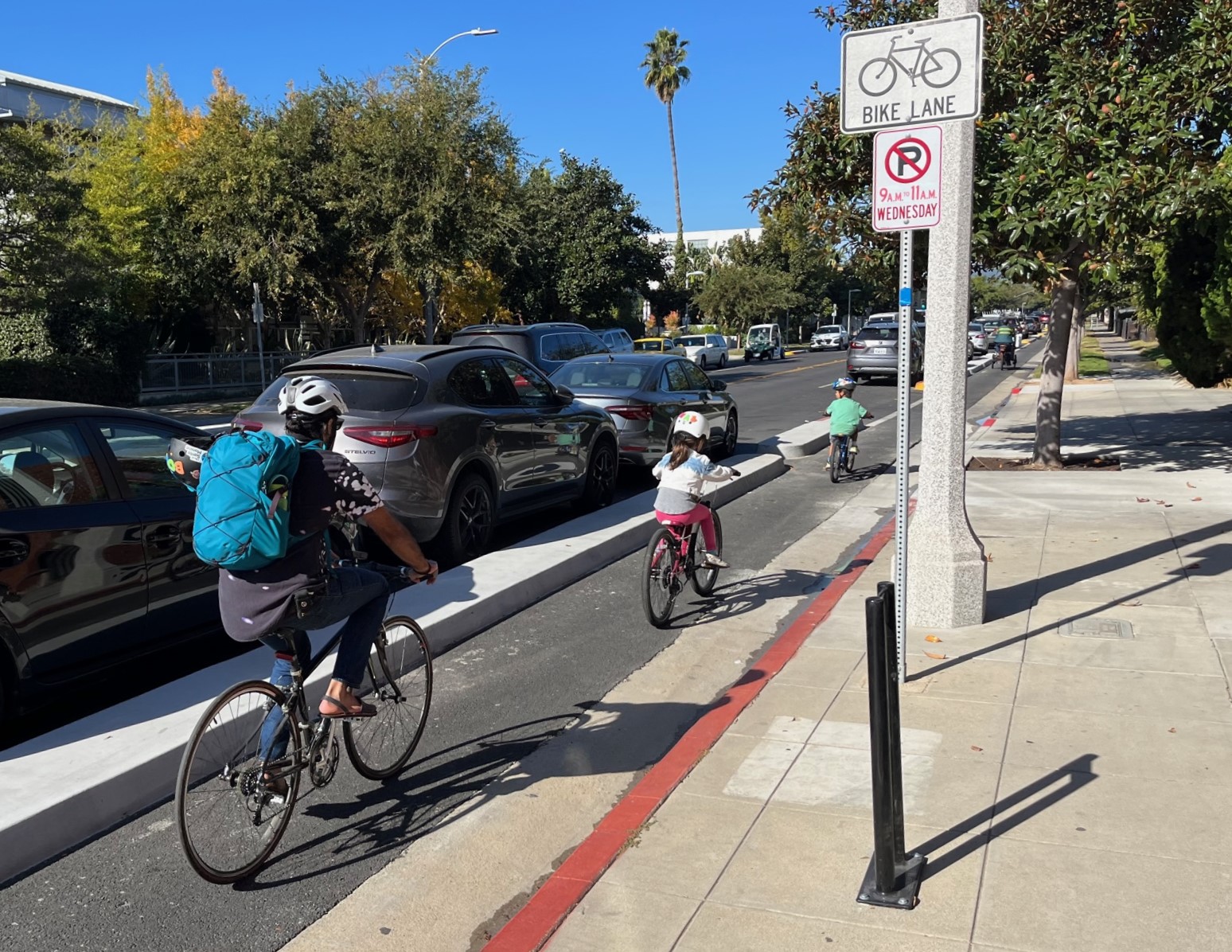"Watch out, Amsterdam," proclaimed Santa Monica Mayor Gleam Davis. "We are going to be the bike capital of the world." The bold statement reflected the city's accomplishments and aspirations as leaders gathered to celebrate the recently completed curb-protected bike lanes on 17th Street, which feature Southern California's first protected intersections, sometimes called a "Dutch-style" intersection.
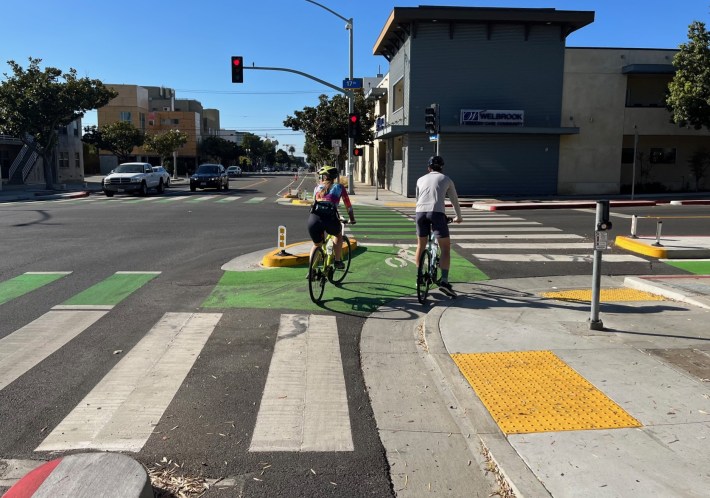
Santa Monica's Safe Streets for 17th Street and Michigan Avenue project includes full Dutch-style curb-protected intersections along 17th at both Broadway and Arizona Avenue. The intersections are an established best safety practice; they include small concrete islands that force drivers to slow down when turning across the bikeway; this makes for greatly improved safety for folks on foot, on bike, and even in cars.
The project includes just over one mile of protected bikeway between Wilshire Boulevard and Pico Boulevard. The configuration varies slightly. South of Michigan, the bike lanes are sidewalk-level; north of Michigan, the city added concrete curbs, moving existing unprotected bike lanes to be protected behind curb and parked cars.
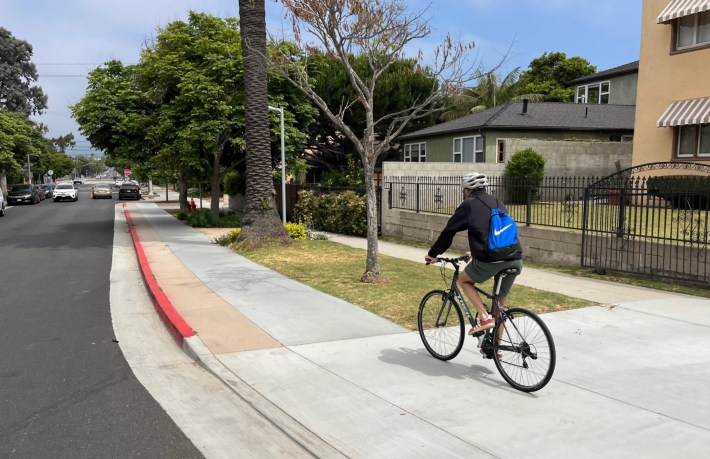
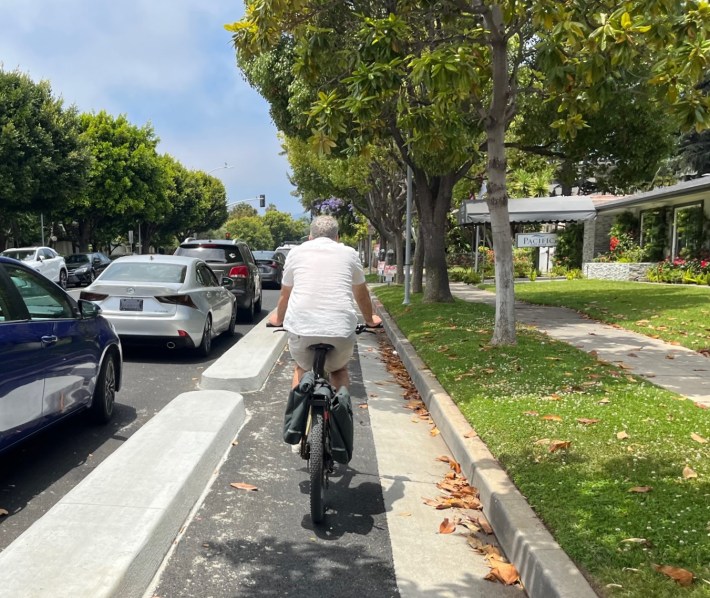
In addition to the gold standard intersections and protection, what's great about the 17th Street bikeway are key connections it makes. Southern California cities often install bike facilities in somewhat out of the way locations: more where there's space, fewer where they're needed. With 17th Street, Santa Monica has strategically installed bike network upgrades where they are most useful. The 17th Street lanes connect to the 17th Street Metro E Line Station and to Santa Monica College. The facility strengthens the city's bike network by connecting to the the E Line bike path, bike lanes on Arizona Avenue and Broadway, and the Michigan Avenue Greenway (MANGo).
The 17th Street project also includes safety upgrades along MANGo/Michigan Avenue: two new small traffic circles, plus added curb extensions and curb ramps. In another strategic project, Santa Monica is currently under construction extending MANGo eastward.
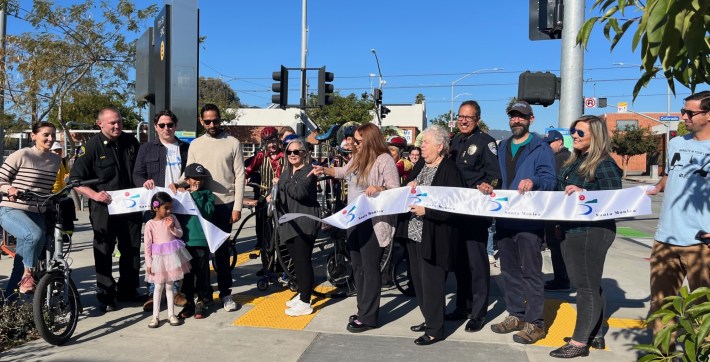
Hundreds of cyclists, residents, and city family attended Saturday's ribbon-cutting festivities, held at the small park-and-ride lot at the 17th Street Metro Station.
Santa Monica Department of Transportation Director Anuj Gupta opened the ceremonies, noting that he had biked to the event with his eight-year-old son. Gupta praised the "region-leading design" as a "phenomenal transformation" that represented how the city plans to continue working with the community to improve safety, including "engaging with the community, getting input throughout [the process]" and "adopting well-researched best practices from cities around the world."
Santa Monica Spoke founder Cynthia Rose praised the project as "a shining example" and "a template for making streets safe and equitable."
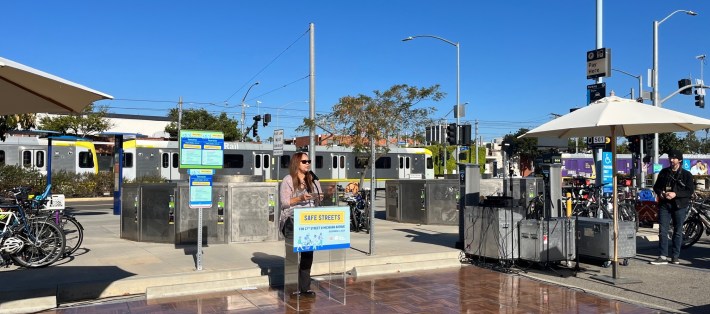
Mayor Davis emphasized that not only does the project improve safety for cyclists and pedestrians, but makes 17th "safer for everyone." "I enjoy the 17th Street bike lanes as a driver because [the project] makes me a better driver."
Acknowledging the presence of so many "kids and young families" using the bikeway and attending the event, Davis affirmed that the improvements are for "our future generation."
"You are the future," Davis stated, "We are setting [young people] up for a life of safe and sustainable transportation."
